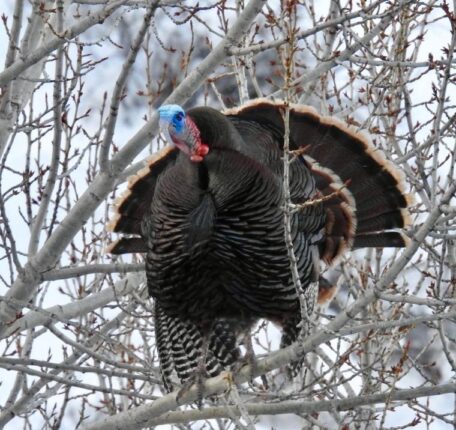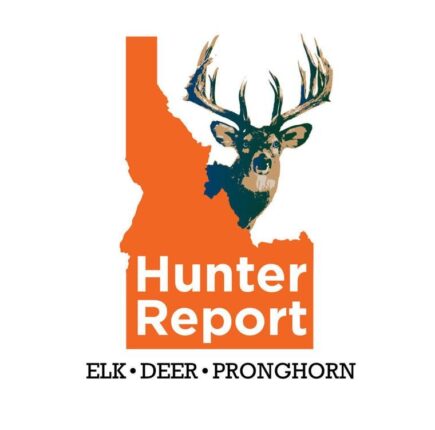You might be thinking, “It’s pretty hard to top 2020’s string of record-setting fish,” but then in walks 2021 like the ’27 New York Yankees. This year, anglers from all across the country flocked to Idaho’s numerous fisheries and amounted some incredible new state records, from carp to cutthroat trout.
In total, 2021 had 18 new state records, which included six certified weight records and 12 new catch-and-release records. Making the cut this year are the following angler trophy stories, from Priest Lake to American Falls and everywhere in between.
A load of carp
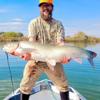
Catch-and-release state record grass carp.
Cris Endicott poses with his catch-and-release state record grass carp.
Not too long ago, Meridian’s own Cris Endicott landed a whopping 46.7-pound Snake River grass carp on Oct. 10. The grass carp measured 50 inches long and set a new rod/reel certified weight state record for the species. Since 2016, records for carp have been kept separately for rod/reel and archery anglers, and this fish surpassed the current 39.5-pound archery record set by Saige Wilkerson in 2012.
Record cutthroat trout tips scales (and boat) in Priest Lake
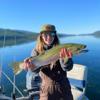
Madison Nackos with a westslope cutthroat trout from Priest Lake.
Madison Nackos poses with her record-setting westslope cutthroat trout from Priest Lake.
This time of year, Priest Lake is more suited for ice skating than boating. But back in May 2021, Spokane angler Madison Nackos wound up setting a new catch-and-release state record for a westslope cutthroat trout that tipped both the scales and the boat. Coming in at an impressive 24 inches, the westslope cutty beat out the previously held record of 21 inches set back in 2020 by Tom Weadick.
Westslope cutthroat trout are native to Idaho and can be found in both lakes and streams throughout Idaho’s Panhandle Region and throughout central Idaho’s Clearwater and Salmon river systems.
Everything’s just perchy

Adam Mann holds up his record perch from Cascade Reservoir.
Adam Mann holds up his record perch from Cascade Reservoir.
Lake Cascade is renowned for its “jumbo” yellow perch, so much so that it even attracts anglers from as far away as Wisconsin. Mosinee, Wisconsin, native Adam Mann made the journey in search of some trophy perch ice fishing in March 2021. During that trip, Mann hoisted up a new certified weight record perch, weighing in at 3.22 pounds, or roughly the weight of a bag of apples.
“It was incredible, I’ve never seen anything like that,” Mann said.
His record topped the previously impressive record of 2.96 pounds held by Skye Coulter set in 2016.
A cutthroat tug-of-war

Jon Urban poses with his Lahontan cutthroat trout in June 2021.
Jon Urban poses with his Lahontan cutthroat trout in June 2021.
Jon Urban of Eagle is no stranger to the catch-and-release record books. Urban set the Lahontan cutthroat trout catch-and-release record once before, but had the title stripped earlier this year by Stephen Veals in March. Just two months later, Jon Urban was back on top of the leaderboard, this time with an even bigger Lahontan cutthroat trout — 18.5 inches long — while fishing on Grasmere Reservoir.
Important note: Anglers looking to set a catch-and-release record should be prepared with a tape measure and a camera. Remember, catch-and-release records need to be broken by a minimum of ½ inch to qualify.
Honorable mentions Community pond trophy
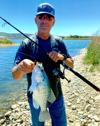
Angler Joe Brandes hold his record white crappie from Sawyers Pond.
Angler Joe Brandes hold his record white crappie from Sawyers Pond.
Most local ponds aren’t known for their trophy fish, but Joe Brandes made us reconsider that notion. In July, this lucky Boise angler landed an impressive white crappie while fishing Sawyers Pond near Emmett. While Brandes let the 15 ¼-inch white crappie go, he took home a new catch-and-release state record.
Not too common
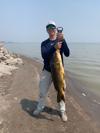
This record common carp
This record common carp was caught by angler Kaden Hammer on American Falls Reservoir this year.
It’s not every day that an angler hauls in a 37 ½-pound common carp from the depths of American Falls Reservoir, but on July 14 this year, that’s just what angler Kaden Hammer did. Hammer’s catch earned him the catch-and-release state record for common carp.
Gold-medal tanker

Angler Kyle Stevens hoists a record goldfish
Angler Kyle Stevens hoists a record goldfish caught with a bow on the Snake River.
Back in March, Snake River angler Kyle Stevens shot a massive 3.4-pound goldfish with a bow, earning him a certified weight record for the species in archery.
Checking records in real-time
Catch-and-release records will no longer be printed in the Idaho Fishing Seasons and Regulations brochures. Instead, the online rulebook will be accessible via a QR code that folks can scan (in the brochure) with their mobile phones that will direct them to Fish and Game’s up-to-date table of records. With anglers breaking records left and right, Fish and Game staff are working to keep state record information accessible and current.
